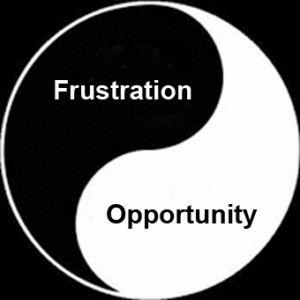 Contact center leaders often express frustration with their current technology. Yet in our experience, they have substantial opportunities to optimize efficiency and improve the customer experience by getting more out their current investments. Here are some high-impact strategies for success.
Contact center leaders often express frustration with their current technology. Yet in our experience, they have substantial opportunities to optimize efficiency and improve the customer experience by getting more out their current investments. Here are some high-impact strategies for success.
Expand the Role of Data
Contact centers should review the information contained in their enterprise databases to see if they are getting the most out of this treasure trove. This review should leverage internal (agent) and external (customer) perspectives. For customers, data can be used to create a concierge experience, thereby communicating “we know you.” For agents, data-directed routing and guided contact handling helps them interact efficiently, with targeted information.
Use Effective Routing
Skills-based routing often gets underutilized under the premise that all agents can handle all calls. Unfortunately, there’s often a steep learning curve before agents are competent and comfortable fielding all kinds of contacts. Moreover, it frustrates customers who experience long hold times only to find that their agents lack the skill level to address their issues.
When using skills-based routing, well-conceived phone prompts can help callers self-select for routing to appropriately trained and experienced agents. Skills are added to agent profiles as their proficiency develops. In more advanced settings, context-based routing can spare customers the tedium of listening to voice prompts by using existing information to customize their prompts, routing, and agent interaction. This technology leverages ANI, IVR-entered account number, or biometrics to identify the customer and retrieves available data – e.g., customer name, the contact and transaction history, current status, etc. – to which the contact routing software applies business rules.
ANd don’t forget omnichannel! While many centers still predominantly handle voice calls, channel diversity and customer expectations put pressure on centers to route contacts properly across all offered channels. Routing tools should be deployed for each media you handle, with associated reporting and metrics.
Manage Performance
Reporting is perhaps the top area every center should be targeting to get more out of their current technology. Many centers proudly produce a plethora of reports that few ever really review or use. Reports should be based on strategy, not data dumps. It’s time to get the right information to the right people at the right time in a format they can readily consume and act on.
Tuning up your WFM offers the potential to improve workload projections and staffing for both efficiency and a better customer experience. If you have WFM, it may be time to gain some expert advice to ensure you are using it effectively for forecasting volume, projecting staff requirements, and scheduling staff. You could also explore its capacity to support time off requests, shift bidding, agent visibility, etc.
QM is typically used more effectively than WFM. Screen recordings are a powerful addition to QM that can provide insights into how people are using systems and adhering to processes. They even expose (or deter) issues like distracted chatting or surfing.
With solid reporting and effective use of performance management tools, analytics can be the next focus. Data analytics should be the first priority. Many reporting applications have the ability to build/schedule reports that combine the data from multiple sources – hopefully in scorecards and dashboards – and then drill down into root cause and actionable insights. Once that is in place, then pursue speech, text, or desktop analytics if you have the resources to work with the tools.
Optimize Knowledge Aids
At the desktop, the biggest opportunity to use technology more effectively lands squarely on knowledge aids. Even if your tool is just an online intranet or portal, or you are using SharePoint, it can be highly valuable to agents IF the content is trusted and structured in a way that is easy to use. To that end, ensure your articles are up to date, accurate, and understandable. Assign an “owner” for overall management – deleting, updating, reviewing, etc. – and make sure they cultivate direct input from the users.
Invest in Support Staff
Doing more with technology is an exciting opportunity, but it’s not just about more licenses or infrastructure. You need qualified, trained support resources to use it effectively – whether optimizing menus and routing paths, developing and maintaining knowledge content, or applying performance tools. And those resources need to have focus and accountability – not do-it-in-your-spare-time jobs. They need to apply the tools effectively by working with vendors and users to configure them in service of your business needs. They also need training on all components to ensure all users (including leadership) understand the potential and value.
Buy new where you must, but think first about how to use what you have well, or add to it to do more which optimizes technology, budget, and business value.
For more detailed information on this subject, download the full article »
